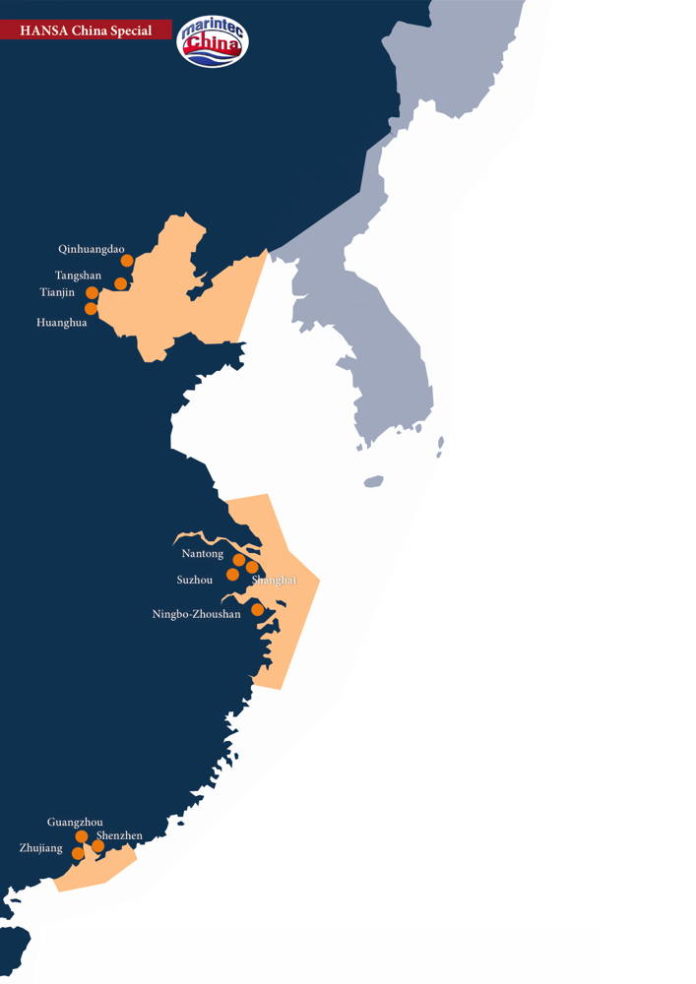
Introducing rules on required sulphur fuel content is an ongoing process in China affecting international shipping. China Classification (CCS) will supervise the process and informs about rules and penalties
The Chinese Ministry of Transport issued an Emission Control Area (ECA) Implementat[ds_preview]ion Scheme 4 December 2015 which has entered into force from 1 January 2016. At start, the area encompassed only parts of the Pearl River Delta, the Yangtze River Delta and of the Bohai-rim Waters. According to an implementation roadmap, the ECAs will be extended further. China defined core ports within the ECAs, and as of 1 January this year, all eleven such ports have implemented low sulphur content control measures. By September, Shenzhen, Guangzhou, Zhuhai Port, Tianjin, Qinhuangdao, Tangshan and Huanghua Port as well as all ports in the Yangtze River Delta have installed the regime. According to statistics provided by CCS, from April to November 2016, Shanghai MSA inspected 1,858 vessels and found 55 vessels in breach of the requirements.
The number is expected to rise as the areas widen: From 1 January 2018 the allowed sulphur content (m/m) will be limited to less than 0.5% or equivalent measures, meaning using ashore cold iron, LNG or an exhaust gas cleaning system in all ports. Vessels at berth will have to comply except one hour after arrival and within one hour before departure. The problem: the definition of »berth« differs from port to port, though it is normally seen as period between the moments when the ship is being securely moored at a berth and unmoored from its berth and does not include anchoring and buoys mooring. In the course of next year the ECA rule will become even stricter as all in-port times, not only those at berth, will be subject to requirements. The sulphur limit will be raised to 3.5% short term, though. As of 1 January 2019 less than 0.5% will be required at all times within all Chinese ECAs, while from 1 January 2020 the margin will be lowered again to less than 0.1% including expansion of ECAs. This step depends on the completion of an assessment of efforts planned prior to 31 December 2019. Generally, all equipment including auxiliary engines, boilers and generators has to comply.
Chinese port authorities may also release implementation ahead of time – a fact that will also influence controls, CCS states. Ships in need of a changeover to low-sulphur fuels will have to ensure detailed reporting – date has to be kept for three years – while the changeover has to take place within one hour. The latter complicates the definition when exactly the switch to clean fuels has to take place.
Those vessels using shore power or green energy such as LNG, dual fuel or exhaust gas cleaning will also be affected by requirements. Inspections will take place under Port State Control regime. This means, potential penalties may also affect vessels which already left Chinese waters. Violation cases presented by CCS suggest that crew awareness training for fuel changeover may be necessary as not all fuels offered qualify.


















